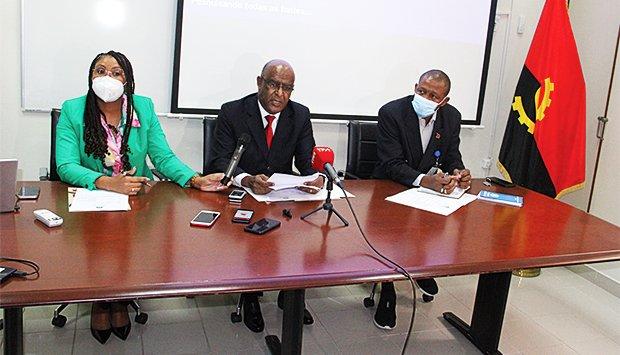Africa-Press – Angola. The HIV-AIDS situation in the country is stable and under control, with an average prevalence of 2 percent, being considered one of the lowest in the Sub-Saharan region, the Secretary of State for Public Health said in Luanda.
Carlos Alberto de Sousa, who was speaking during a seminar on the current epidemiological and programmatic situation of the national HIV/AIDS response, said that there were some regional asymmetries, with different values in some border provinces, but that on average the situation varied by two percent. of prevalence.
The Secretary of State highlighted that there is a great effort to keep the indicators stable, through preventive and medication actions, involving communities and families, through better communication, in order to help in the control of the indicators.
The country, he said, has invested in the National Response and in the gradual improvement of the availability of local resources and political commitment. In recent years, he said, several strategies have been implemented, considered excellent by the World Health Organization (WHO) and other international organizations, to achieve the global goals of reducing the number of cases of infected people.
Another gain, he highlighted, is the implementation, throughout the country, of projects such as the “Test and Treat” (TT) strategy, the expansion of the offer of Viral Load (CV), the Early Childhood Diagnosis (DPI), the adoption of more effective therapeutic regimens for the diagnosis of HIV.
Even with the advances recorded in the 2017-2021 period, the leader recognized that we are still far from reaching the proposed global goals, which urges the creation of new acceleration strategies for better results.
“Overall, with the better availability of tests and the information system, there is an 80 percent increase in the total number of tests carried out in 2021, compared to 2017”, he highlighted.
The increase in the number of people undergoing treatment, he pointed out, has also contributed to helping people living with HIV to have a better quality of life. “Furthermore, scientific evidence shows that a person with HIV, who adheres to an effective regimen of antiretroviral treatment and keeps their viral load suppressed, does not transmit HIV through sexual intercourse,” he said.
The logistics of antiretroviral drugs, advanced, improved considerably after the simplification of therapeutic regimens, with the introduction of Dolutegravir (DTG), for adolescents and adults, since February 2021.
“Primary health care and in particular the health care of the mother and child, continue to be the priorities of the Angolan Executive”, he guaranteed.
For the Secretary of State, a step taken in this direction is the campaign “Born free to shine”, launched by the First Lady of the Republic, Ana Dias Lourenço, which reduced the rate of transmission of HIV from mother to child, from 26 per percent in 2018, to 15 percent in 2021”, he highlighted.
According to the Secretary of State, services for the prevention of HIV transmission from mother to child (PTMF) have increased significantly, from 3 services in 2004 to 650 in 2017 and 743 in 2021, with these services being implemented in the 164 municipalities of the country.
The latest UN-AIDS report, he said, informs that of the 37.7 million people living with HIV, 84 percent know their serological status, 73 percent are on antiretroviral treatment and 66 percent have a viral load. deleted.
In this same report, he advanced, it was estimated that worldwide there are 1.5 million new infections and 680,000 AIDS-related deaths.
For More News And Analysis About Angola Follow Africa-Press






